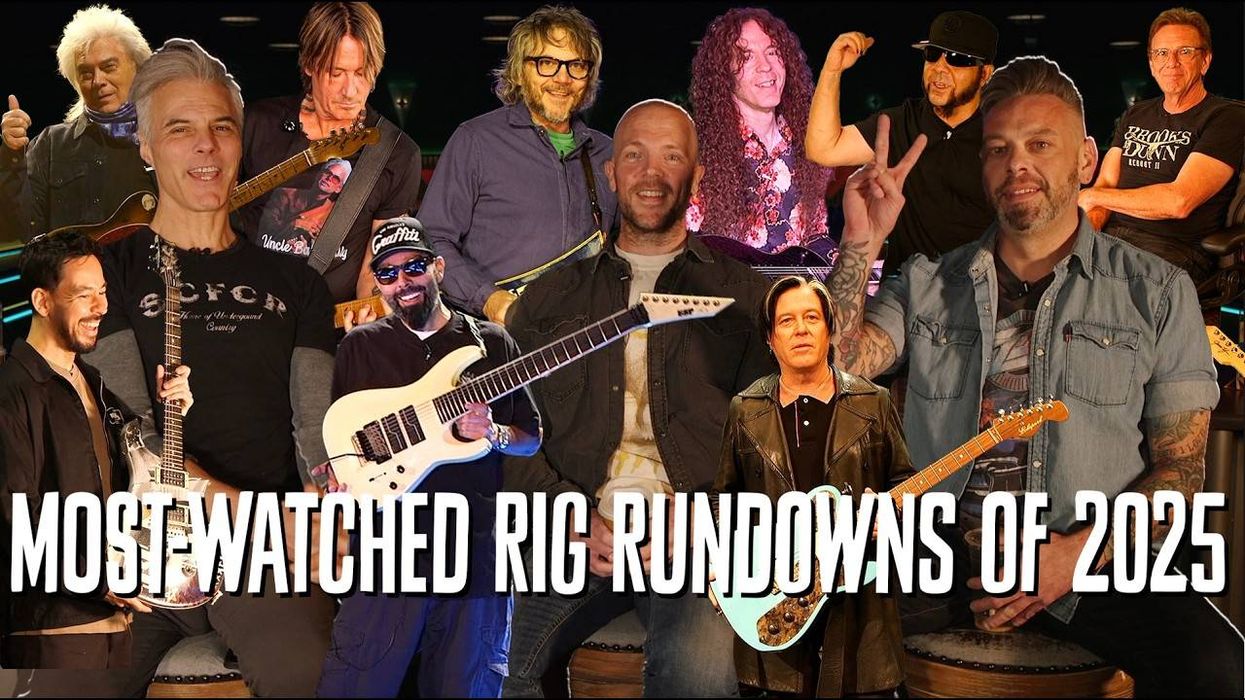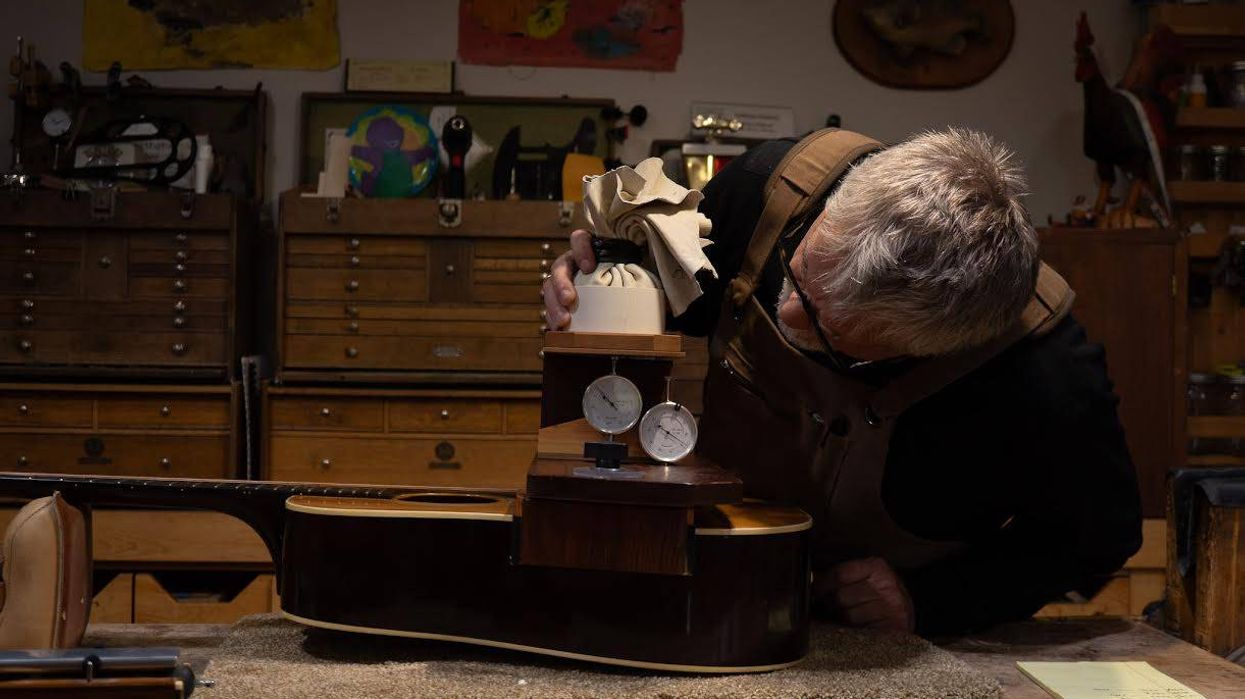Theory: Intermediate
Lesson Overview:
• Learn some ripping open-string rhythm riffs.
• Create rhythmic tension through repetition.
• Understand how to combine colorful notes with pentatonic sounds.
Click here to download a printable PDF of this lesson's notation.
Though he’s only 33, Gary Clark Jr. has already shared the stage with such blues greats as B.B King, Buddy Guy, and Eric Clapton—each of whom can now be counted as a fan. Hailing from Austin, Texas, Gary appears humble, yet confident, and this vibe is mirrored in his playing, which simmers with style and intention. His music is an intoxicating cocktail of blues, rock, soul, gospel, hip hop, and R&B. Despite all these influences, one thing remains: Gary Clark Jr.’s songs always have a captivating groove that serves as the bedrock for his soulful blues licks. In this lesson, we’ll delve into the man’s riffs and licks, and explore his influences.
Let’s begin with an example of his groove-based riffs. We’ll start with a low and washy groove in E minor (Ex 1). To give the riff real punch, let those open strings ring on beat 2. When supported with a tight backbeat, they’ll give you that infectious, head-bopping effect that Gary does so well. His riffs are usually relatively simple, but he adds little variations to keep them interesting without losing that all-important groove factor. Including the 9 (F#) in the fourth measure adds some harmonic interest, and also serves to pull the riff back around.
Click here for Ex. 1
Ex. 2 provides a contrast to the more open and ringing rhythm parts in the previous example. This time we’re using short, muted power chords on the downbeats, while laying down a solid groove on the upbeats to create variation and keep the riff ticking over. The tonality here is A minor, but with the added 6 (F#) in the second measure for extra flavor.
Click here for Ex. 2
Gary understands that one essential trait of blues guitar is heartfelt phrasing. Ex. 3 uses a technique that builds that slow burn and adds a sense of “question-and-answer” to his phrasing. We’re using the E minor pentatonic (E–G–A–B–D) scale to construct a repeating phrase and then cap it with different endings. This approach gives the listener something to latch onto, and Gary uses it all the time.
Click here for Ex. 3
Gary is incredibly adept at moving around the beat, whether that means laying back or pushing ahead. Sticking with the E minor pentatonic, Ex. 4 illustrates how he stays in one place on the neck and plays with rhythmic variations before stepping out of the musical roundabout to resolve the line. He often keeps patterns like these going longer than one measure—and does so with ease.
Click here for Ex. 4
We’ve already touched on this a little, but Gary likes to add one note to a pentatonic scale to give it some extra color and enhance the sophistication of his lines. In Ex. 5, we move to the key of B minor. The phrase opens with some classic blues vocabulary, which is followed by a slow bend and release from the 9 up to the b3 and back. We emphasize the 9 again in measure three before ending the phrase with a big released bend on the 4th string and a slide up to the 5 (F#).
Click here for Ex. 5
In addition to working open-string riffs into his rhythm parts, Gary also likes to include open strings in his lead lines—a nod to the old Delta blues players. In Ex. 6, the open strings are surrounded with some bends and slides, which makes the technique even more intriguing. Check out how Gary might fret notes on the 3rd and 2nd strings, while using open strings to create a drone effect.
Click here for Ex. 6
Ex. 7 is an example of Gary’s articulation—particularly how he’ll often use fast hammer-ons to give notes a different attack. To get that grace-note effect, the trick is to play all the hammer-ons at the same speed.
Click here for Ex. 7
You can hear the influence of the late Chuck Berry in Ex. 8, which is like something Gary might play over his tune, “Travis County.”Delivered over a pumping rock ’n’ roll blues in C, this idea uses some classic repetitive “Chuck” bends and some Jerry Reed-esque sliding double-stops.
Click here for Ex. 8
Hints of Albert King and Stevie Ray Vaughan often infiltrate Gary’s improvisations. Ex. 9 opens with some minor pentatonic vocab that isn’t a million miles away from something you might hear from SRV. This is followed by a succession of bends that are straight-up Albert King.
Click here for Ex. 9
We end this journey with a technique that Gary is very fond of—the unison bend. He uses unison bends all the time and varies their speed to either get a snarling dissonant warble or a throaty chorused sound. Ex. 10 uses both. You can milk the first one a bit by taking a little time to get to pitch, whereas the last two require quicker bends. Add a fuzz pedal and some vibrato, and you’re halfway there!



























